

China's State Council Information Office on Tuesday issued a white paper on the development of traditional Chinese medicine (TCM) in China.
Following is the full text of the document.
Traditional Chinese Medicine in China
The State Council Information Office of the People's Republic of China
December 2016
First Edition 2016
Contents
Preface
I. The Historical Development of TCM II. Policies and Measures on TCM Development
III. Carrying Forward the Tradition and Ensuring the Development of TCM
IV. International Exchanges and Cooperation in TCM
Conclusion
Preface
Humanity has created a colorful global civilization in the long course of its development, and the civilization of China is an important component of the world civilization harboring great diversity. As a representative feature of Chinese civilization, traditional Chinese medicine (TCM) is a medical science that was formed and developed in the daily life of the people and in the process of their fight against diseases over thousands of years. It has made a great contribution to the nation's procreation and the country's prosperity, in addition to producing a positive impact on the progress of human civilization.
TCM has created unique views on life, on fitness, on diseases and on the prevention and treatment of diseases during its long history of absorption and innovation. It represents a combination of natural sciences and humanities, embracing profound philosophical ideas of the Chinese nation. As ideas on fitness and medical models change and evolve, traditional Chinese medicine has come to underline a more and more profound value.
Since the founding of the People's Republic of China in 1949, the Chinese government has set great store by TCM and rendered vigorous support to its development. TCM and Western medicine have their different strengths. They work together in China to protect people from diseases and improve public health. This has turned out to be one of the important features and notable strengths of medicine with Chinese characteristics.
I. The Historical Development of TCM
1. History of TCM
In remote antiquity, the ancestors of the Chinese nation chanced to find that some creatures and plants could serve as remedies for certain ailments and pains, and came to gradually master their application. As time went by, people began to actively seek out such remedies and methods for preventing and treating diseases. Sayings like "Shennong (Celestial Farmer) tasting a hundred herbs" and "food and medicine coming from the same source" are characteristic of those years.
The discovery of alcohol in the Xia Dynasty (c. 2070-1600 BC) and the invention of herbal decoction in the Shang Dynasty (1600-1046 BC) rendered medicines more effective.
In the Western Zhou Dynasty (1046-771 BC), doctors began to be classified into four categories - dietician, physician, doctor of decoctions and veterinarian.
During the Spring and Autumn and Warring States Period (770-221 BC), Bian Que drew on the experience of his predecessors and put forward the four diagnostic methods - inspection, auscultation &olfaction, inquiry, and palpation, laying the foundation for TCM diagnosis and treatment.
The Huang Di Nei Jing (Yellow Emperor's Inner Canon) compiled during the Qin and Han times (221 BC-AD 220) offered systematic discourses on human physiology, on pathology, on the symptoms of illness, on preventative treatment, and on the principles and methods of treatment. This book defined the framework of TCM, thus serving as a landmark in TCM's development and symbolizing the transformation from the accumulation of clinical experience to the systematic summation of theories. A theoretical framework for TCM had been in place.
The Shang Han Za Bing Lun (Treatise on Febrile Diseases and Miscellaneous Illnesses) collated by Zhang Zhongjing in the Eastern Han Dynasty (25-220) advanced the principles and methods to treat febrile diseases due to exogenous factors (including pestilences). It expounds on the rules and principles of differentiating the patterns of miscellaneous illnesses caused by internal ailments, including their prevention, pathology, symptoms, therapies, and treatment. It establishes the theory and methodology for syndrome pattern diagnosis and treatment differentiation. The Shen Nong Ben Cao Jing (Shennong's Classic of Materia Medica) - another masterpiece of medical literature appeared during this period - outlines the theory of the compatibility of medicinal ingredients. For example, it holds that a prescription should include at the same time the jun (or sovereign), chen (or minister), zuo (or assistant) and shi (or messenger) ingredient drugs, and should give expression to the harmony of the seven emotions as well as the properties of drugs known as "four natures" and "five flavors." All this provides guidance to the production of TCM prescriptions, safe application of TCM drugs and enhancement of the therapeutic effects, thus laying the foundation for the formation and development of TCM pharmaceutical theory. In the late years of the Eastern Han Dynasty, Hua Tuo (c. 140-208) was recorded to be the first person to use anesthetic (mafeisan) during surgery.
The Zhen Jiu Jia Yi Jing (AB Canon of Acupuncture and Moxibustion) by Huangfu Mi during the Western Jin time (265-316) expounded on the concepts of zangfu (internal organs) and jingluo (meridians and collaterals). This was the point when theory of jingluo and acupuncture &moxibustion began to take shape.
Sun Simiao, a great doctor of the Tang Dynasty (618-907), proposed that mastership of medicine lies in proficient medical skills and lofty medical ethics, which eventually became the embodiment of a moral value of the Chinese nation, a core value that has been conscientiously upheld by the TCM circles.
A herbology and nature masterpiece, the Ben Cao Gang Mu (Compendium of Materia Medica) compiled by Li Shizhen in the Ming Dynasty (1368-1644) was the first book in the world that scientifically categorized medicinal herbs. It was a pioneering work that advanced TCM pharmaceutical theory.
The Wen Re Lun (A Treatise on Epidemic Febrile Diseases) by Ye Tianshi during the Qing Dynasty (1644-1911) developed the principles and methods for prevention and treatment of pestilential febrile diseases. It represents the theory and results of the practice of TCM in preventing and treating such diseases.
Following the spread of Western medicine in China from the mid-Qing Dynasty, especially during the period of the Republic of China (1912-1949), some TCM experts began to explore ways to absorb the essence of Western medicine for a combination of TCM with Western medicine.
 |

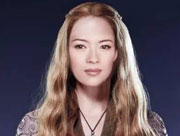 Who Will Fit The Chinese Roles In Game Of Thrones?
Who Will Fit The Chinese Roles In Game Of Thrones? China's Hubei Shennongjia added to World Heritage List
China's Hubei Shennongjia added to World Heritage List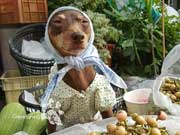 Cute Dog At Fruit Stand Becomes Latest Internet Sensation
Cute Dog At Fruit Stand Becomes Latest Internet Sensation Top 10 livable Chinese cities
Top 10 livable Chinese cities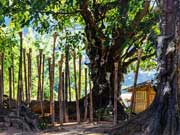 The last primitive tribe in China
The last primitive tribe in China China's first intelligent security robot debuts in Chongqing
China's first intelligent security robot debuts in Chongqing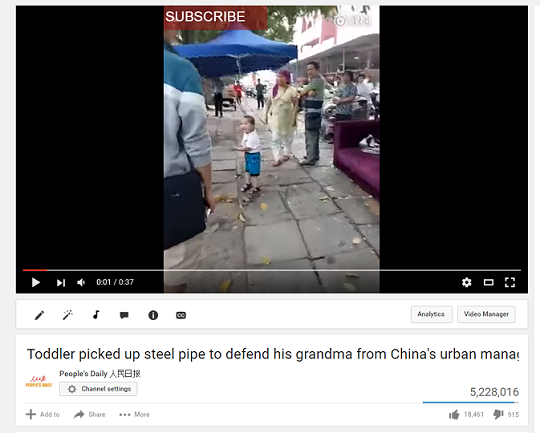 A Total of 3,552 Subscribers Vanish In Two Days; YouTube Closes All Doors to Users’ Inquiries
A Total of 3,552 Subscribers Vanish In Two Days; YouTube Closes All Doors to Users’ Inquiries Out of this world! Futuristic UFO-shaped yacht has its own garden and a stunning underwater viewing deck
Out of this world! Futuristic UFO-shaped yacht has its own garden and a stunning underwater viewing deck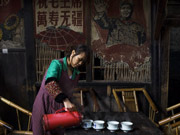 An old tea house in Chengdu
An old tea house in Chengdu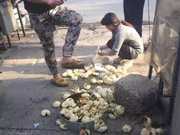 Furious Customer Crushes All the Buns from Vendor Just Because He Was Given the Wrong Flavor
Furious Customer Crushes All the Buns from Vendor Just Because He Was Given the Wrong Flavor